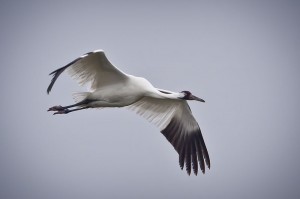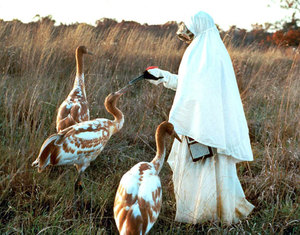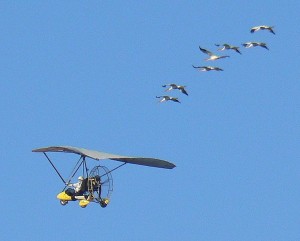Authors note: This piece was written for my Environmental Policy Analysis class, the assignment asked about the costs and benefits of adaptive management.
I recently finished reading the book Wild Ones: A Sometimes Dismaying, Weirdly Reassuring Story About Looking at People Looking at Animals in America by Jon Mooallem. The book tells the story of three endangered animals in North America, the polar bear, the metalmark butterfly, and the whooping crane, and digs deeper into why and how we conserve these species.

For me, the book summarized a lot of what I’ve been recently feeling about conservation- to what end are we saving these species, at what cost, and for what purpose? The polar bear was picked not for its existence value but for its political value in the fight against climate change. The metalmark butterfly is bred in tanks in a lab and then released into a habitat that can no longer support it- having been ravaged by sand mining and environmental damage.
The whooping crane though is perhaps the most emotional and confusing character in the book. The butterfly is watched in the lab by tired undergrads earning bio101 credits, and the polar bear is an effort of NGO’s in Washington D.C., but the whooping crane has survived extinction primarily by the determination of a group of volunteers.
The whooping crane is an enormous white bird, standing five feet tall with a red crest and black tipped wings. Its natural habitat is central North America, from Alberta, Canada to Texas in the United States. Wild populations were estimated at 10,000+ birds, but by 1938 there were only fifteen animals left. The whooping crane was declared endangered in 1967, one of the first species to be protected by the Endangered Species Act. Conservation efforts have been successful in raising the wild population to 382 individuals, a 2400% increase, but the flock is still precarious.
The group that oversees the conservation of whooping cranes is the Whooping Crane Eastern Partnership (WCEP), which is made up of government agencies like U.S. Fish and Wildlife and the Wisconsin Department of Natural Resources, and also by NGOs like the International Crane Foundation and Operation Migration.
Operation Migration takes the most hands on role in the conservation of the cranes. In an effort to keep the birds “wild”, volunteers dress up in crane costumes while raising the chicks, never letting them around non-costumed humans. When ready for migration, the cranes are led by an ultralight plane from Wisconsin to Louisiana, over the course of three to four months. The intent is to teach the cranes the migration path so that someday they will successfully breed in the wild and continue to migrate without the involvement of humans.

So far, the cranes have not been very successful in breeding in the wild, often stepping on their own eggs or abandoning their nests. Further difficulties arise when hunters shoot the birds for sport, and minimal fines do nothing to deter the crime.[1] So Operation Migration and WCEP find themselves every fall leading a new group of juveniles on the migration path, and hoping that someday soon, they won’t need to anymore.
So how does this connect to adaptive management (AM)? Interestingly, there doesn’t seem to be a consensus regarding whether the management of the whooping crane fits under the AM umbrella or not. While the US Geological Survey (USGS) uses a photo of the cranes following an ultralight on their Adaptive Management webpage, an external review of WCEP states that “WCEP has not followed Adaptive Management practices”.

I chose the whooping crane for this question of “what are the theoretical costs and benefits of adaptive management, and what might hinder their implementation in practice?” because it offers a wide range of material for consideration and analysis, and a direct example of how and why AM should or should not be used.
On the one hand, the problem of whooping crane conservation was essentially at triage stage- without immediate and directed action the bird would be gone forever. On the other, an approach to the conservation management based on AM principles of scientific method could offer a more robust solution. Operation Migration, a group of ultralight enthusiast non-scientists are reported to “have a poor understanding of scientific methods and adaptive management,” but have also successfully kept the species alive.
As the immediate threat of extinction has receded, the political, scientific and social fractures have grown. Rifts both within and outside of WCEP have made the project more difficult each year. Successfully migrated cranes have been spotted in Wal-Mart parking lots eating garbage, much to the chagrin of conservationists- after all the work to keep these birds wild, they’ve ended up acting like pigeons. It brings up the question of why we are so dedicated to conserving these birds, what expectations we have of them, and what truly is wildness.
Adaptive management is based on the scientific method of question, hypothesis, prediction, implementation, analysis, updated hypothesis, and repeated implementation. How do these principles engage with the non-scientific community, and in instances of disaster? When a species is near extinction, is adaptive management really the best way to try to save it, or is immediate action better serving? Is preserving natural capital a right of the many or a privilege of the scientific community? Additionally who is liable for the loss of a species due to bad management, or credited for good management?
The costs of adaptive management are significant; it takes time to organize and conduct an AM plan, it takes dedicated staff and institutions to keep track of data and historical knowledge, it requires communication and cooperation amongst stakeholders and most importantly it requires the clear coordination of a common goal of management. Any one of these factors can lead to the failure of an AM project. As we’ve discussed in class previously, the designation of a clear and common goal, or even the agreement on what is truly the problem, can be a hurdle.
On the other hand, in my view, the benefits of AM are variable, dependent on the word “better”: better management, better outcomes, better knowledge of systems. It’s hard to quantify just how much better “better” is, and whether it is worth the challenge of dedicated AM practice.
In terms of the whooping crane, it does seem like the efforts of WCEP and Operation Migration have been successful, despite their formal scientific practice. Critics say that their “experience driven process neglects four critical steps of science: 1) forming questions and hypotheses about the situation; 2) making predictions based on expert opinion and current scientific knowledge; 3) collecting representative data; 4) conducting objective analyses of the data” (WCEP External Review, 2010). But they have also successfully created a dedicated community of whooping crane enthusiasts, who contribute time, money, and passion to the preservation of this species. Each year when the birds land in their destination, a crowd of people watch and celebrate the successful migration. AM doesn’t take into consideration social and cultural buy-in, or how to integrate conservation principles into public attitudes.
Overall, adaptive management seems recalls the idea that we must keep in mind the world we wish to live in, while working within the world we have. Ideally, management would be collaborative, adaptive, and inclusive. But likely more often than not, it is challenging, costly, and divisive. AM can be a goal but it also shouldn’t be restrictive- if a project is not employing AM, it should not be seen as contrary to good management. The scientific community should seek to advance AM thinking through public outreach and education, as well as collaborative projects with social and environmental organizations dedicated to improved outcomes of natural systems.
References:
Images sourced from wikimedia unless otherwise noted.
http://www.bringbackthecranes.org/whoweare/pdf/ExternalReviewMarch2010.pdf
www.operationmigration.org
http://www.usgs.gov/sdc/adaptive_mgmt.html
Mooallem, Jon. Wild Ones: A Sometimes Dismaying, Weirdly Reassuring Story about Looking at People Looking at Animals in America. New York: Penguin, 2013. Print.
[1] In 2011 an Indiana man shot “First Mom”, the first whooping crane to successfully mate in the wild and raise the chick to maturity. The man was convicted, and found guilty, but the fine was set at $1, hardly enough to deter others from doing the same.